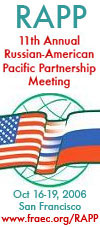|
|
||||||||||
BISNIS is the U.S. Government's primary market information center for U.S. companies exploring business opportunities in Eurasia. A part of the U.S. Commercial Service, BISNIS disseminates information electronically and through consultations by its staff of trade specialists. Questions or comments? Call 202-482-4655 or toll free 800-872-8723, or email bisnis@ita.doc.gov. |
|||||||||||
How do you see the sector developing in Armenia? Three things are needed to bring the financial sector up to a level where it can dynamically develop—good regulation, a country rating, and a sensible tax scheme. |
||
|
 Cascade Capital Holdings office in Yerevan. |
|
What are the strongest sectors in Armenia for trade and investment that will help drive development in financial services? Some promising sectors include:
What is Cascade’s vision for development and expansion in the market?Cascade is the only group in the country trying to push all the financial buttons and represent a broad spectrum of financial interests. Cascade is already working with USAID and EBRD, is negotiating with IFC, OPIC and the World Bank, is looking to cooperate with KfW and others—so we have solid resources and backers to point to that we have gotten interested in the Armenian financial services market. Eventually, we would like to be able to say to our initial target market, the Armenian Diaspora in the United States and Europe, that there are options for helping Armenia through investment rather than through charity. We would start by trying to attract small investments to newly created investment vehicles, such as mutual funds, and then diversify the products once interest has piqued and some investors have shown up. Other investment vehicles would include government securities in Georgia and Armenia, venture capital funds, bonds issued by Cascade and others—we would offer perhaps 10 different places to spread money and diversify risk just like any Western investment bank does. This is perhaps six months away. In about a month, we will issue the first ever private sector notes in Armenia with a 50 percent guarantee of principal from the U.S. treasury (with USAID assistance) with a one-year maturity. We believe that other Armenian banks will follow in our footsteps in terms of these notes, if the issue proves successful for Cascade. Cascade is also looking at opening offices in the provinces, but wants to make sure that it is able to install good management systems before expanding. As to Caucasus expansion, Cascade recently purchased a bank in Georgia that it bought from a Greek company. We are watching the market and hoping for improvements. We feel that it is important to have a presence there as 90 percent of Armenian trade comes through Georgia, which should be a natural constituency for us, and a basis for further growth. |
||
|
|
|
Surveyed Investors Bullish on Russia Foreign investors in Russia are successfully meeting their business objectives, with year-on-year sales and profits increasing dramatically in 2005, according to the Russia: Investment Destination 2006 survey released in May 2006. Conducted during March-April 2006 by The PBN Company (www.pbnco.com) for the Russian Ministry of Economic Development and Trade and the Foreign Investment Advisory Council, the survey asked the opinions and attitudes of 155 well-known foreign companies, including 102 current investors and 53 potential investors. The current investors surveyed are engaged in the consumer goods sector (20%), production of industrial goods and machines (12%), professional services and consulting (10%), oil and gas (10%), telecommunications and IT (10%), retail and wholesale sales (10%); and banking, insurance, and financial services (10%). Of these, four in ten said that sales increased by more than 30 percent, one-fourth reported that profits grew more than 30 percent, and eight in 10 said that they successfully achieved their business plans in Russia over the past two years. More than 90 percent of companies surveyed plan to increase both their business operations and investment during the next three years. Survey respondents cited the size of the Russian market, the country’s sustained economic growth, the high quality and low costs of human resources, overall political stability, and macroeconomic stability as attractive features of the market. The main problems mentioned by investors are bureaucracy and red tape, corruption, inadequate legislation, and selective interpretation and application of laws. To view the entire survey, visit www.pbnco.com/fiacsurvey2006. |
|
BISNIS is the U.S. government's primary market information center for U.S. companies For more information, call: 202-482-4655 or email: bisnis@ita.doc.gov. To call BISNIS toll-free, dial 1-800-USA-TRADE (872-8723), press 2 and then press 8 |
|
Director Tanya Shuster tanya_shuster@ita.doc.gov Deputy Director Philip de Leon Managing Editor Ellen House Articles by non-U.S. government employees express the views of the authors and should not be construed as a statement of U.S. government policy. |




